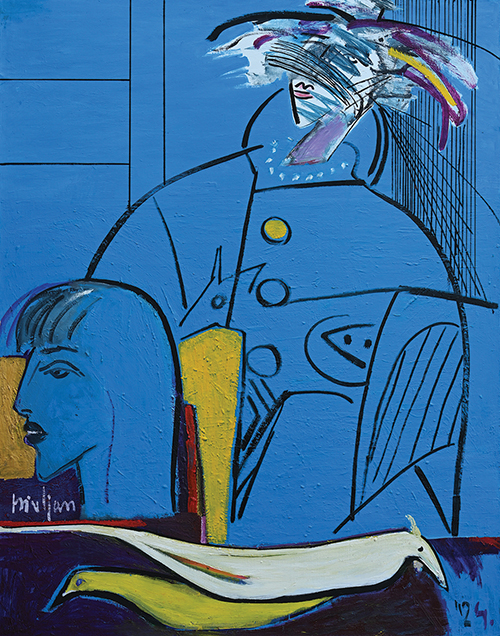
SRETKO DIVLJAN - "50 years of divljanism"
September 30 – October 26, 2024
As part of the ceremony marking the 70th anniversary of the Regional Museum of Jagodina, Sretko Divljan, a visual artist, opened a solo exhibition entitled “50 Years of Divljanism”, marking 50 years of living and working in Jagodina. The exhibition presented his latest works. Divljan is recognizable by his particular artistic expression, which he called “divljanism”, which is characterized by emphasized linearity, intense colors and the absence of any improvisation, as well as the fact that with each new cycle the artist presents himself in a new light. Expressive, based on a pure visual language, at times wild, then again gentle, on the border between drawing and painting, the artistic work of Sretko Divljan not only represents a unique phenomenon on the Jagodina art scene, but, having received full affirmation from art critics, has also found a prominent place in contemporary Serbian art.
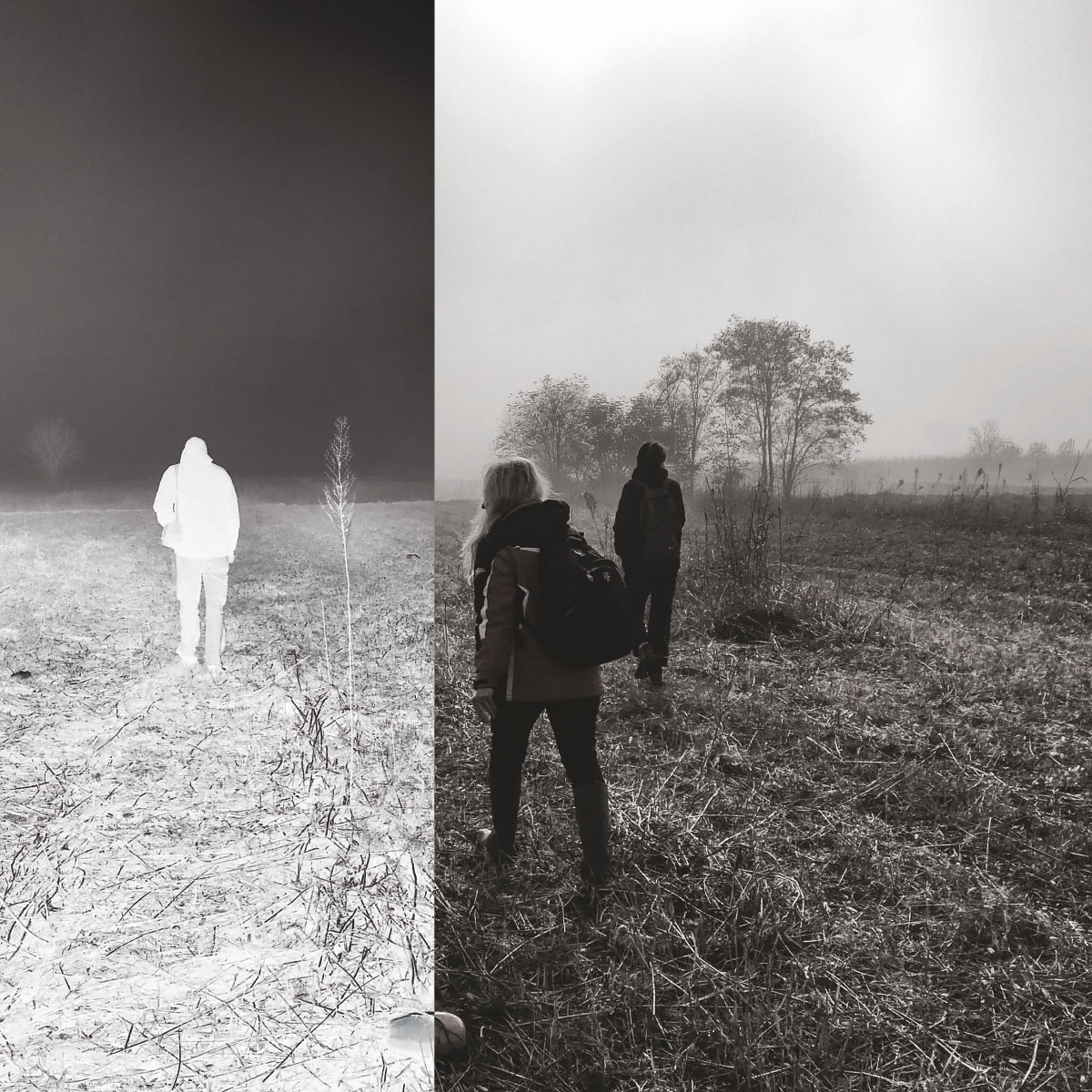
FROM DAWN TO DUSK
exibition of field photography
April 5 – September 30, 2024
The exhibition is the product of the first two campaigns (2022-2023) of the Systematic Archaeological Prospection of the Jagodina Region project, which is financed by the Ministry of Culture of the Republic of Serbia, and implemented by experts from the Regional Museum of Jagodina and the Institute of Archaeology inBelgrade.
In a poetic way, through a selection of field photographs, the authors of which are members of the expert team of the project: Sonja Perić, Petar Milojević, Smiljana Dodić, Dajana Matović and Nevena Cvetković, the results of the archaeological survey are presented, with a focus on the beauty of the landscape and the beauty of field research.
Twenty-five days in the field resulted in a tour of 20 rural atars in the Belica basin and the region of Crni vrh, recording and mapping, with chronological and typological determination of 76 archaeological sites from all periods of the past from the early Neolithic to the late Middle Ages. From several thousand photos, taken during this field research, a selection was made, which represents the landscape surrounded by archaeological sites, places where it was “comfortable” to live in the past, places that had suitable natural, but also strategic conditions for the establishment of settlements from 8000 years ago to the Middle Ages and so on. The beauty of the land, water, sky, sun, forest and country roads reminds the observer that we are surrounded by beauty that should be preserved and inspired, and within that beauty are hidden the secrets of the past, which should be discovered, but not destroyed.
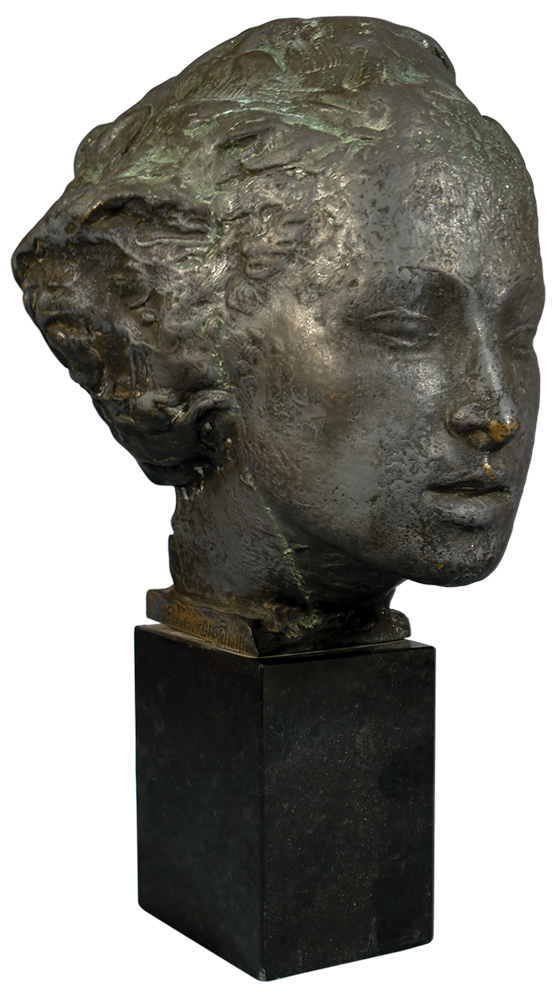
FORMS AND IDEAS WITHIN FIGURE AND ABSTRACT:
Sculpture in Regional Museum Jagodina
February 22 - April 2, 2024
The Collection of Sculptures is one of the most important collections of our museum. Apart from the fact that it contains valuable and diverse material, collected during fieldwork, gifts and purchases, the contents of the collections testify in different ways not only to the art of Jagodina, Pomoravlje, Serbia and the former Yugoslavia, but also to various socio-political phenomena and historical events. The goal of this exhibition is to make available to the widest audience items from the collection that have either never been exhibited before or have rarely been in front of the public.
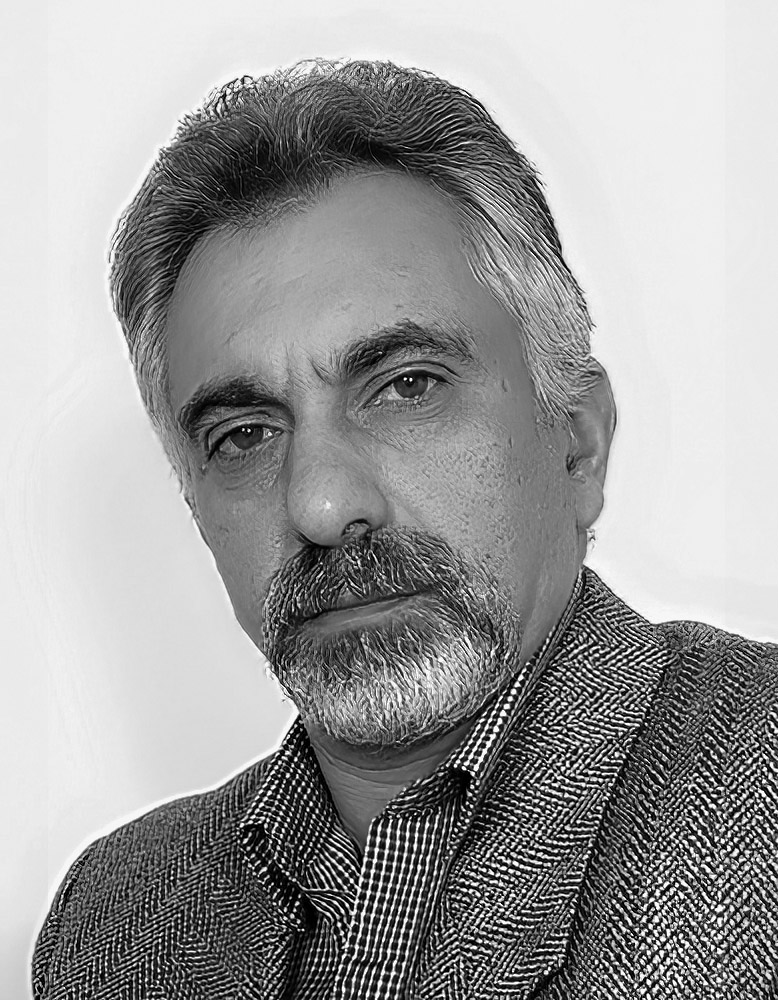
PHOTOGRAPHERS FROM JAGODINA:
Milosav Brajković (1959)
VIRTUAL EXHIBITION
Milosav Brajković has been in the photographic life of Jagodina for almost half a century. Today he is professionally engaged as a museum photographer, while in his twenties and thirties he actively exhibited both within the city photo club, of which he is one of the founders, and at numerous exhibitions in the cities of the former Yugoslavia.
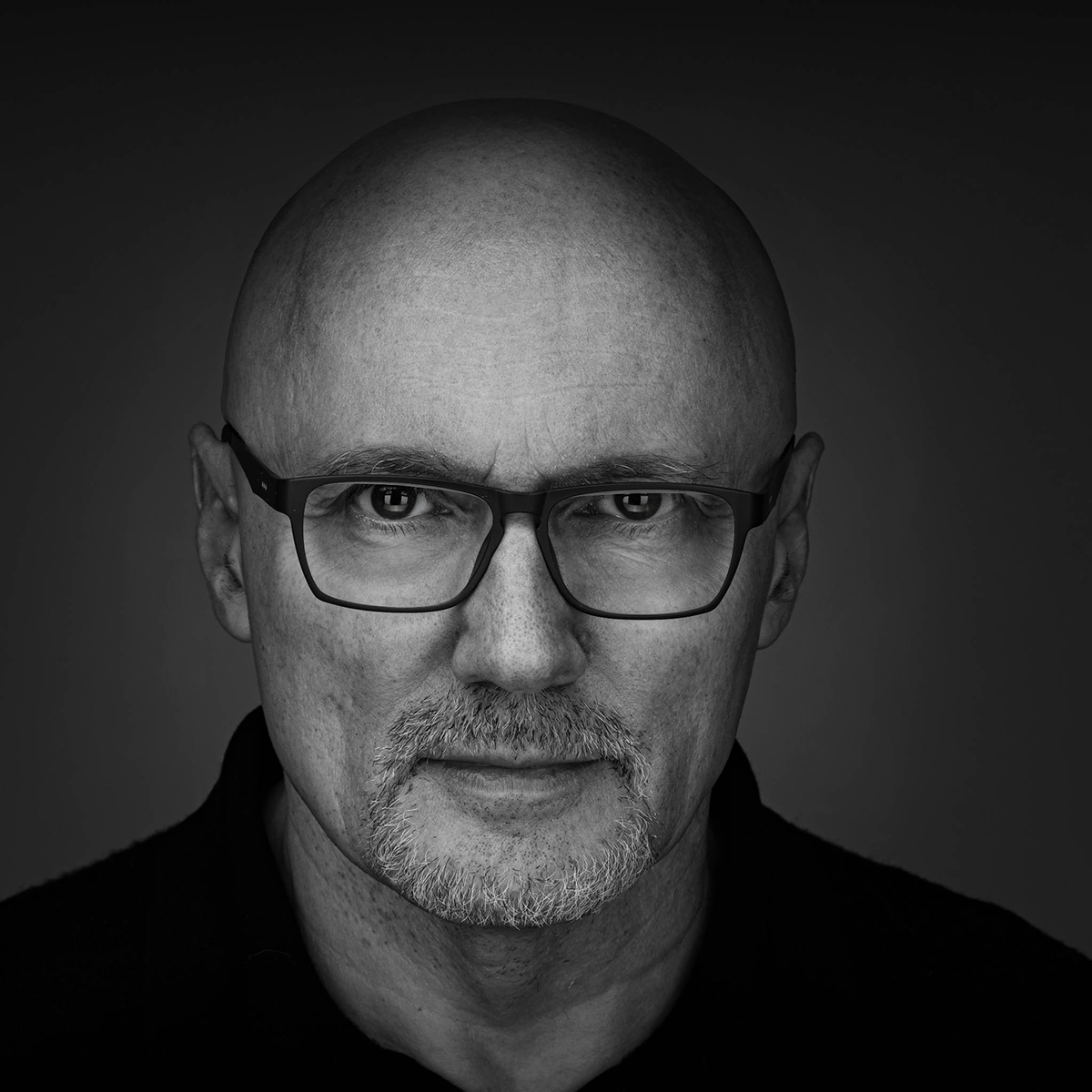
PHOTOGRAPHERS FROM JAGODINA:
Boris Airo (1963)
VIRTUAL EXHIBITION
Boris Airo is a professional photographer employed since 1994 at the University Clinic in Bonn, where he deals with medical photography. As scientific photography does not allow experimentation or creativity, Airo satisfies the need to express his creative side by engaging in other types of photography in his spare time. The Jagodina audience is familiar with nude photography that he exhibited at the first solo exhibition opened in the Cultural Center in Jagodina in August 2002. The virtual exhibition on the website of the Regional Museum Jagodina presents his photos with the theme of still life and seascapes created during his travels in Brittany, Normandy, The Netherlands and Madeira.
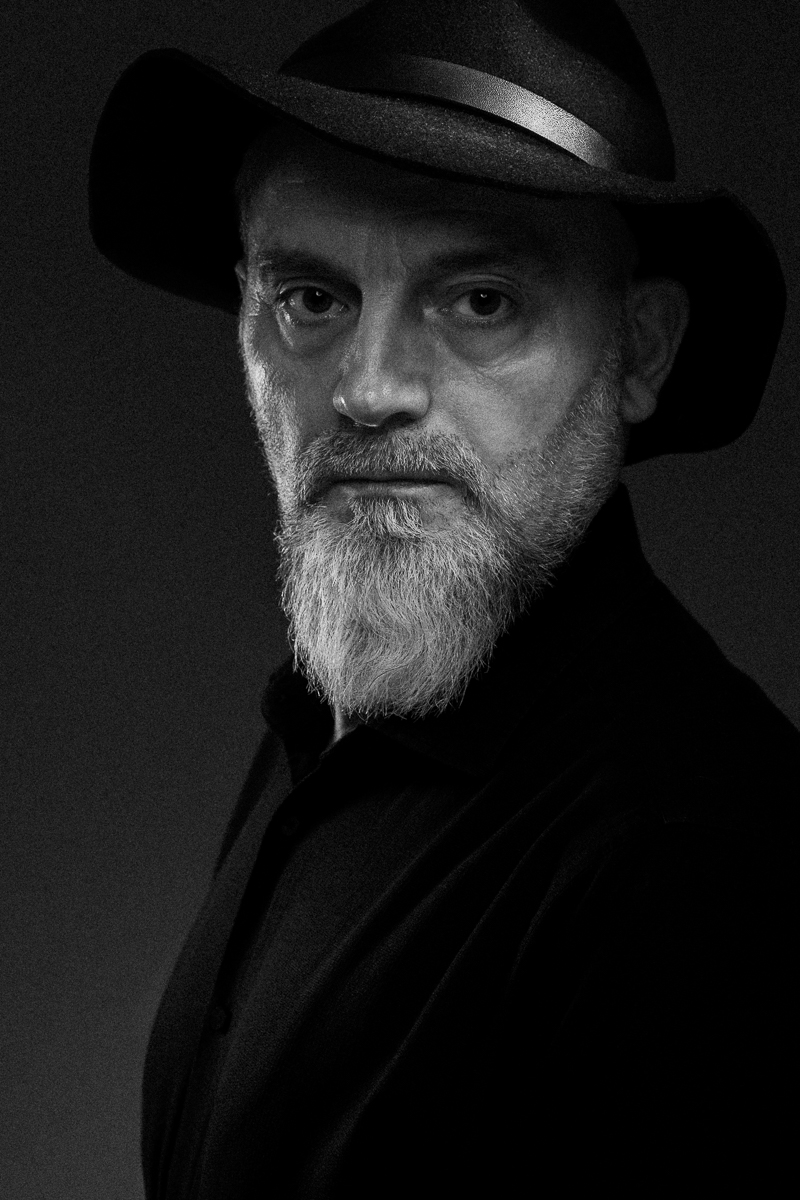
PHOTOGRAPHERS FROM JAGODINA:
Zoran Marmaković (1963)
VIRTUAL EXHIBITION
Zoran Marmaković started photography as a high school student in 1980, and exhibited his works for the first time in 1985. He says that he is a passionate photographer, which he confirmed by returning to his passion – photography – after a long break imposed on him by moving from his native Jagodina to Salzburg (Austria). People and their destinies occupied him as the main subject, so he mostly devoted himself to portrait photography. The people he photographs are not professional models, and he chooses them not because of their appearance, but because each of them has his own story and his own world. With a specific approach to the model and in black-and-white technique, Marmaković creates portraits in which we discover the model’s soul from their looks, wrinkles or facial expressions. At this virtual presentation of the work of photographer Zoran Marmaković, we presented two virtual exhibitions. Both have portraits as their subject, but the first exhibit shows digital and the second analog photographs from project “Let’s talk about you”, which Zoran is still working on.
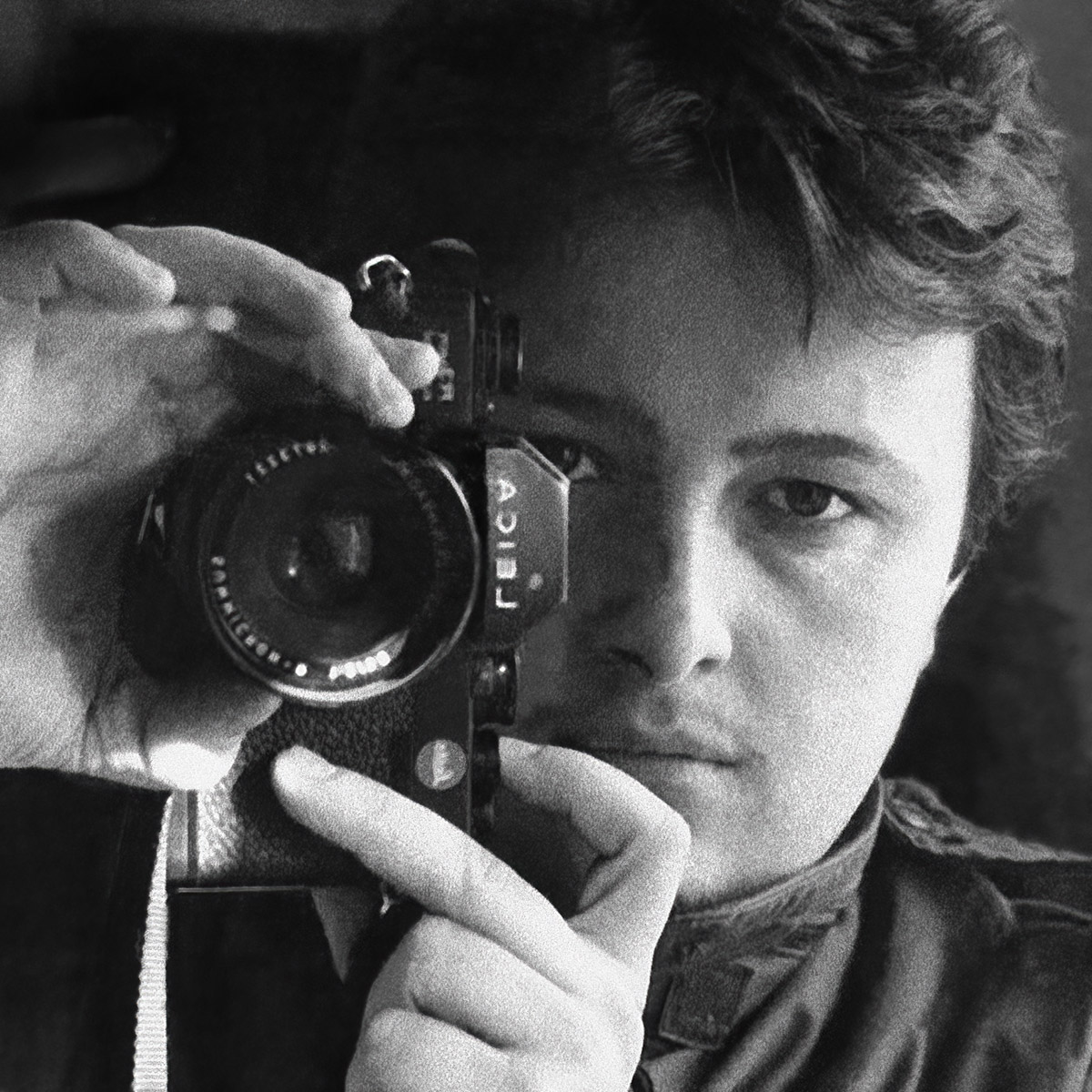
PHOTOGRAPHERS FROM JAGODINA:
Slobodan Štetić (1958)
VIRTUAL EXHIBITION
Slobodan Štetic is the first photographer in Jagodina who graduated in photography from the Faculty of Applied Arts in Belgrade. He began photographing at the end of the seventies of the 20th century and very soon he received awards for his work and exhibited at significant events and exhibitions. In this presentation of his work, two virtual exhibitions of analog photographs created in the greatest number during the eighties of the last century are presented. At the first exhibition, portraits created in the villages near Jagodina or in the city itself were shown. While on the second are photos from the cycle “Disappearance” that deal with the topic of pollution of the human environment, and of man himself who is increasingly alienated from the nature that surrounds him.
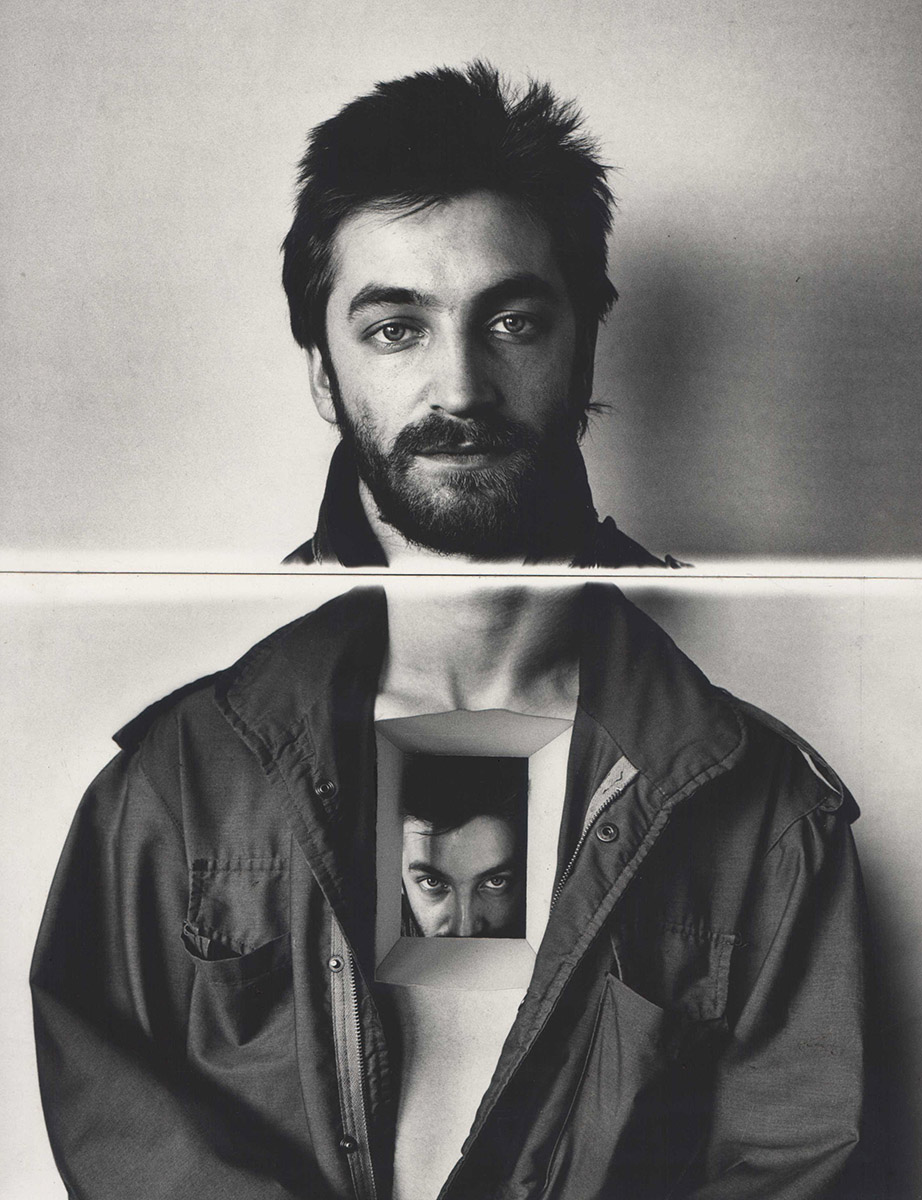
PHOTOGRAPHERS FROM JAGODINA:
Nikola Tatić (1962–2019)
VIRTUAL EXHIBITION
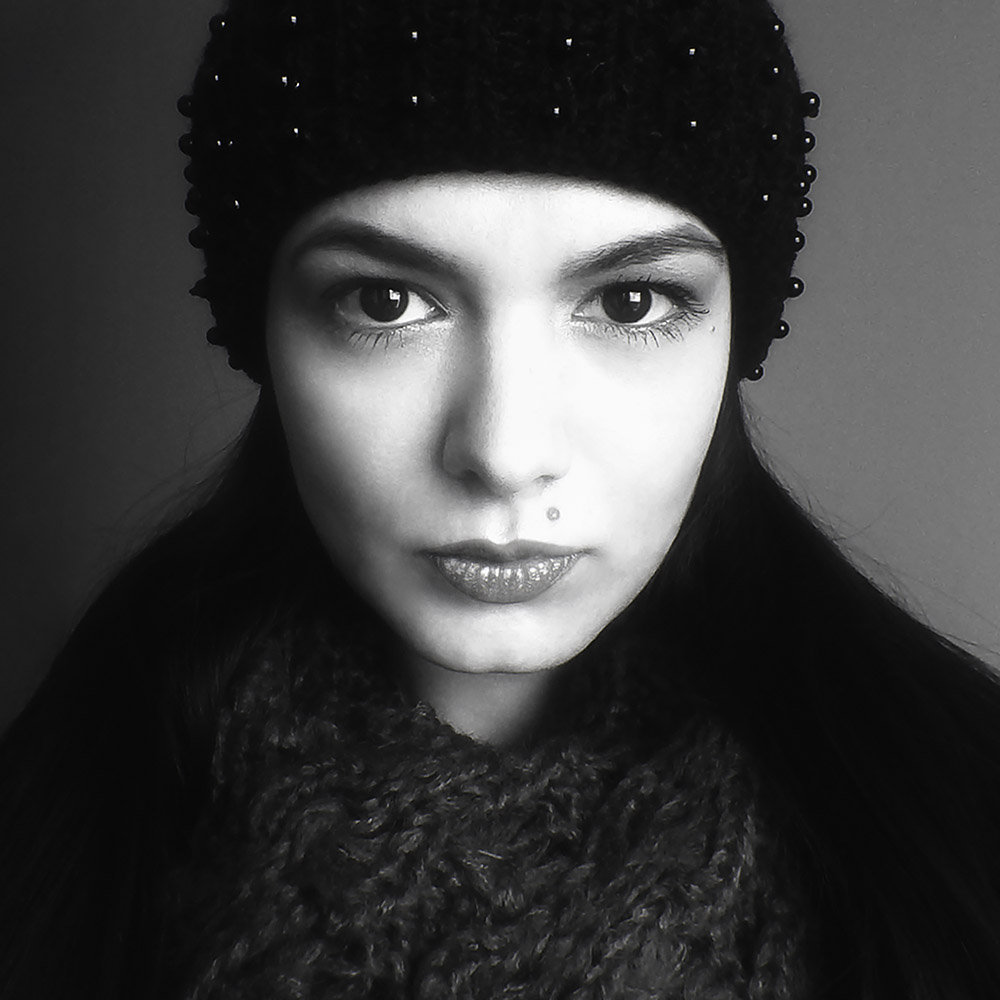
The Artists of Pomoravlje:
Milena Milenković
VIRTUAL EXHIBITION
As the second in a series of virtual presentations of the creativity of young visual artists of Pomoravlje, we present the photos of Milena Milenković from Paraćin, who is very successful in artistic photography and exhibits her works in the country and abroad, and so far she has received about 90 medals and awards for her work. By the decision of the Artistic Council of the Photo Association of Serbia in 2020, she obtained the artistic title of Candidate Master of Photography and thus became the youngest woman to be awarded this title. The most common topic she deals with is the act that allows her to embody her idea in the best way, to which she returns again and again and explores each time from a different aspect. The naked body in her photographies is a metaphor for the other side of the personality – the alter ego, and the introduction of both the female and male bodies is a symbol of the dualism hidden in every person. In the works presented at this virtual exhibition, Milena tries to present the inner struggle and fears that are hidden in each of us, which she evokes by placing the body behind a semi-transparent screen, glass or showing it covered with a drape.
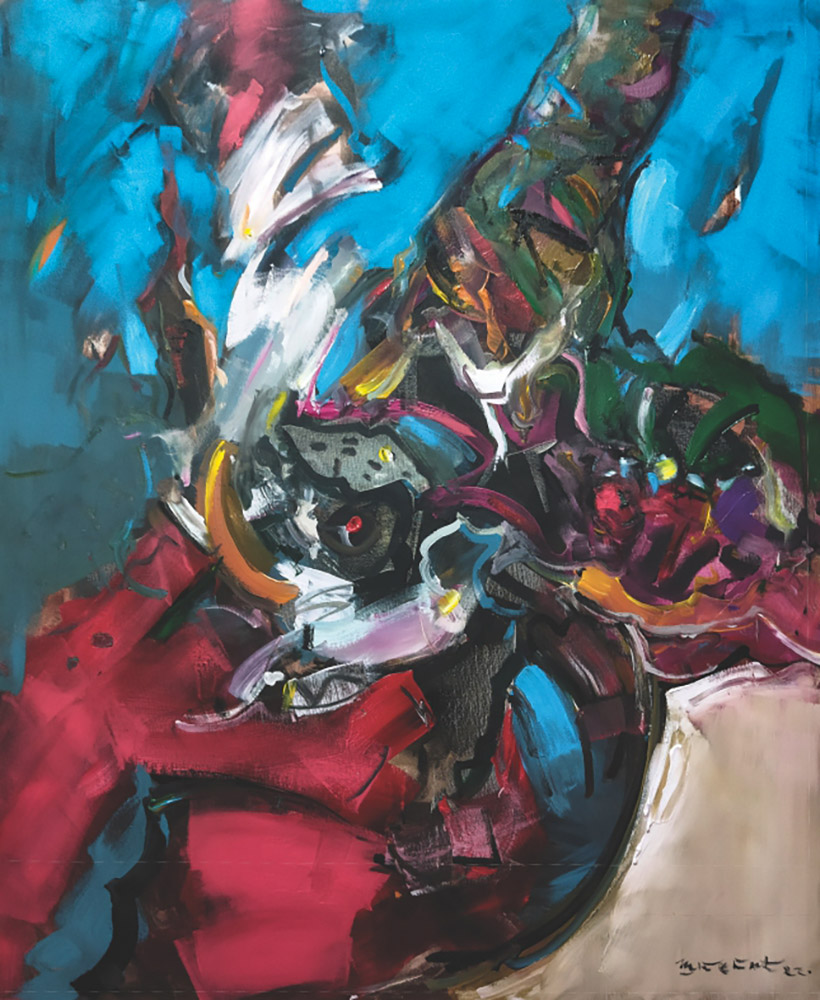
Slobodan Štetić – Paintings
May 11 – June 11, 2023
An exhibition of Slobodan Štetić, one of the most successful visual artists in Jagodina, who has gained recognition even outside the borders of our country, was opened in the Regional Museum in Jagodina. He had his first and only solo exhibition in the Regional Museum in Jagodina in 1984. After almost four decades, we are pleased to renew our cooperation with this distinguished creator of ours. This exhibition presents his new paintings, which can be divided into three thematic units: still lifes, vedutes and abstract compositions.

The Artists of Pomoravlje:
Nađa Milivojević
VIRTUAL EXHIBITION
In order to revive the artistic life in Jagodina and promote young artists, we launched a series of virtual exhibitions where the work of young creators from Jagodina who are engaged in visual creativity will be presented. The first artist to be promoted is Nađa Milivojević, PhD student at the Faculty of Applied Arts in Belgrade, Department of Applied Art and Design. We present her work through the exhibition “(A)perception”, which premiered in 2022 at the Čukarica Cultural Center in Belgrade.

PHOTOGRAPHERS FROM JAGODINA:
Milan Vučić (1873–1937)
VIRTUAL EXHIBITION
After Mihajlo Đorđević (1851–1891), the first recorded photographer born in Jagodina, who worked during the eighth decade of the 19th century, the next photographer from Jagodina was Milan M. Vučić (1873–1937). He first started taking photos as an amateur, and he was one of the participants in the First Exhibition of Photo Amateurs held in Belgrade in 1901. Shortly after this exhibition, he opened a photographic studio in the center of Jagodina, which was very productive. In 1910, Vučić opened a cinema in Jagodina called “Elektro-cinema M. M. Vučić”. After the Balkan Wars, he was no longer involved in photography but engaged himself in showing films, working with members of his family in that business, who continued to run the cinema even after Vučić’s death.
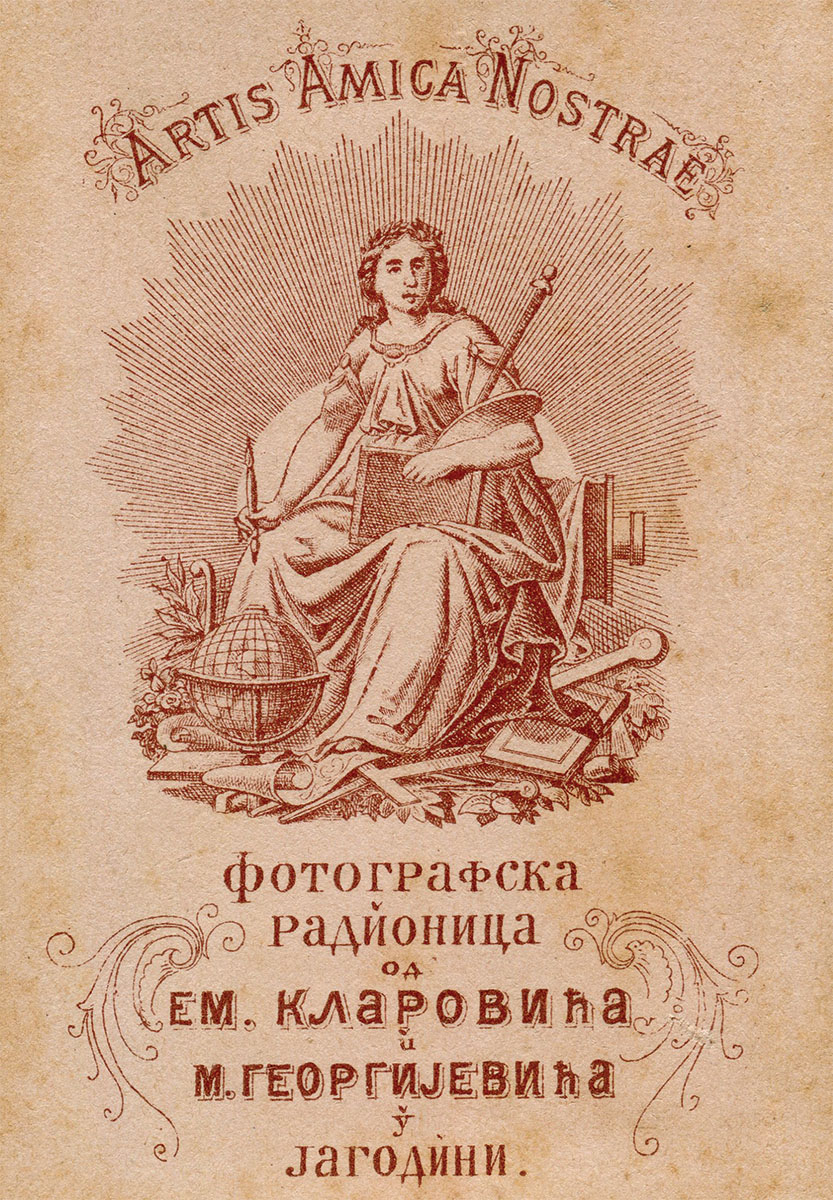
PHOTOGRAPHERS FROM JAGODINA:
Mihailo Đorđević (1851–1891)
VIRTUAL EXHIBITION
According to previous research, Jagodina is one of the first cities in Serbia where photography studios were opened. The first documented photographer to stay longer in the city was a foreigner, Franz Baubin, originally from Prague, who worked in Jagodina in the early seventies of the 19th century. After him, the name of the first photographer from Jagodina, Mihailo Đorđević (1851–1891), is recorded. Since three variants of the reverse have been preserved on which his name is mentioned, one of the possible and even very likely reconstructions would be that after Baubin, Đorđević was the one who worked as a photographer in Jagodina. The assumption would be that he started working at the end of 1874 or during 1875. Since very few photographs have been preserved, Đorđević’s independent studio did not work for long. Then the photographer EmanueloKlar, originally from Germany, arrived in the city, and the two began to work as a partnership until 1876, when Đorđević left for Kragujevac. Klar continued to work independently in Jagodina until the end of the seventies of the 19th century, and then he also went to Kragujevac. At the end of 1880s, Đorđević worked in the town of Jenidze-Vardar (today Giannitsa) near Thessaloniki, where he died in 1891 after a short illness.
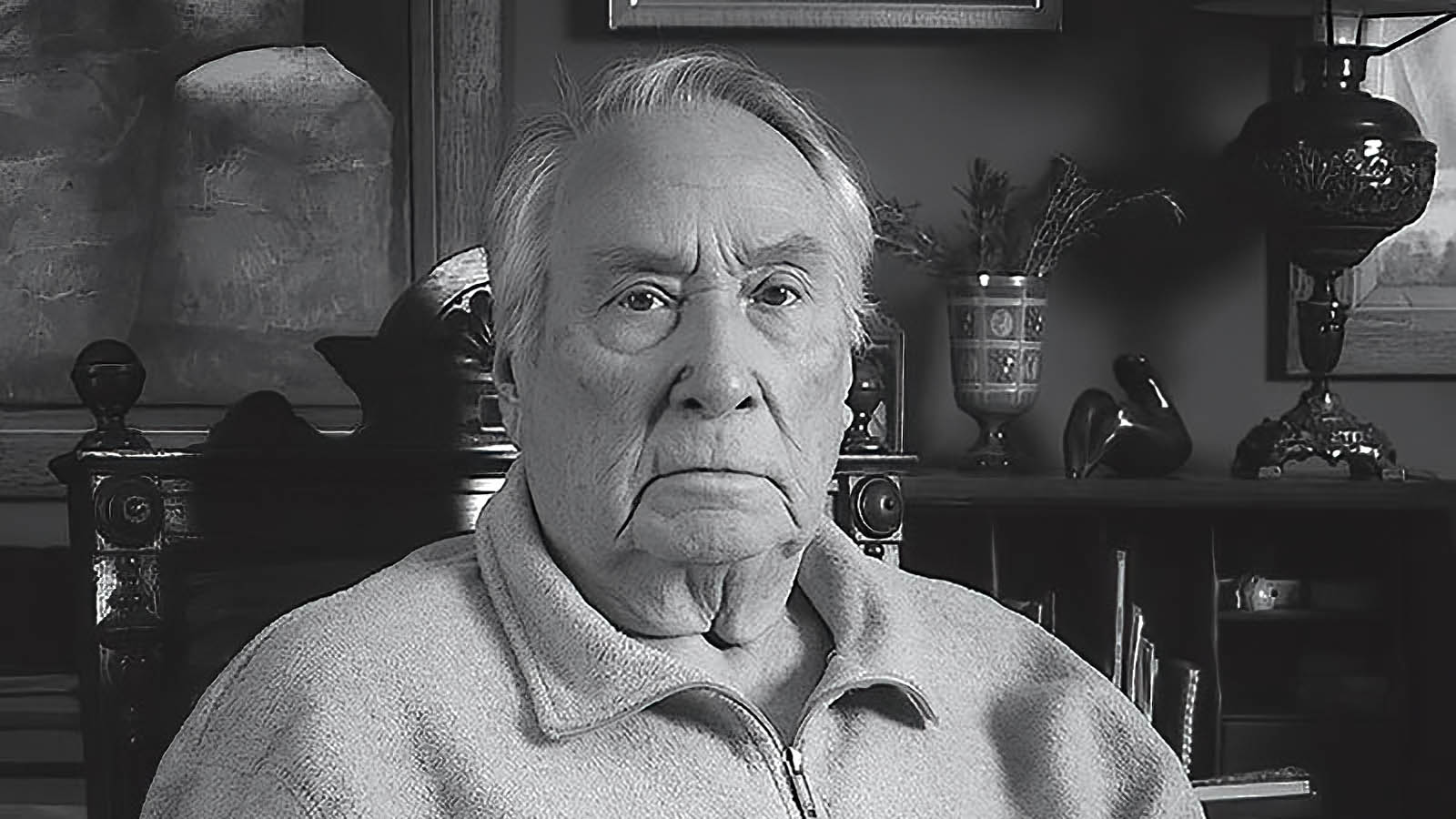
In memoriam: Ljubodrag Janković Jale (1932–2022)
VIRTUAL EXHIBITION
Ljubodrag Janković Jale, a prominent Serbian painter and professor at the Faculty of Applied Arts in Belgrade, passed away in Belgrade on June 9, 2022. Jagodina was his homeland, where he received his first lessons in painting and where he became interested in fine arts. In memory of Ljubodrag Janković Jale, with whom it has always been a great pleasure and honor to cooperate, expressing our great respect, we have prepared a virtual exhibition where we presented his works from the fund of the Regional Museum of Jagodina.

“Photography in the Museum” – FUM 2022 photo contest exibition
Jun 1 - September 29, 2022
As an accompanying program of the manifestation “Museums for 10”, in which almost all museums in Serbia participate every year during the month of May, the Regional Museum of Jagodina organized a photo contest “Photography in the Museum”. The aim of the contest is to popularize cultural heritage and affirm photography. The contest is being held for the first time this year with the desire to become traditional.

THE BIRTH OF GLASSMAKING IN SERBIA
Glass from the collections of the Regional Museum of Jagodina
May 12 - September 20, 2022
By the resolution of the United Nations General Assembly 2022 was declared the International Year of Glass (IYOG22). This whole year will be dedicated to affirming the role and importance that glass has in science, economy and culture. The Regional Museum of Jagodina joins the celebration of the International Year of Glass with the exhibition “Birth of Glassmaking in Serbia: Glass from the Collections of the Regional Museum of Jagodina”, which presents 85 glass items (late antiquity to the mid-20th century) from the collections of the Archaeological and Art Departments.
The territory of the City of Jagodina is the cradle of national production and industrialization of glass in renewed Serbia, because the first glass house was founded here in 1846 on the location between the river Belica and the villages Mišević and Belica, on the slopes of Crni vrh.
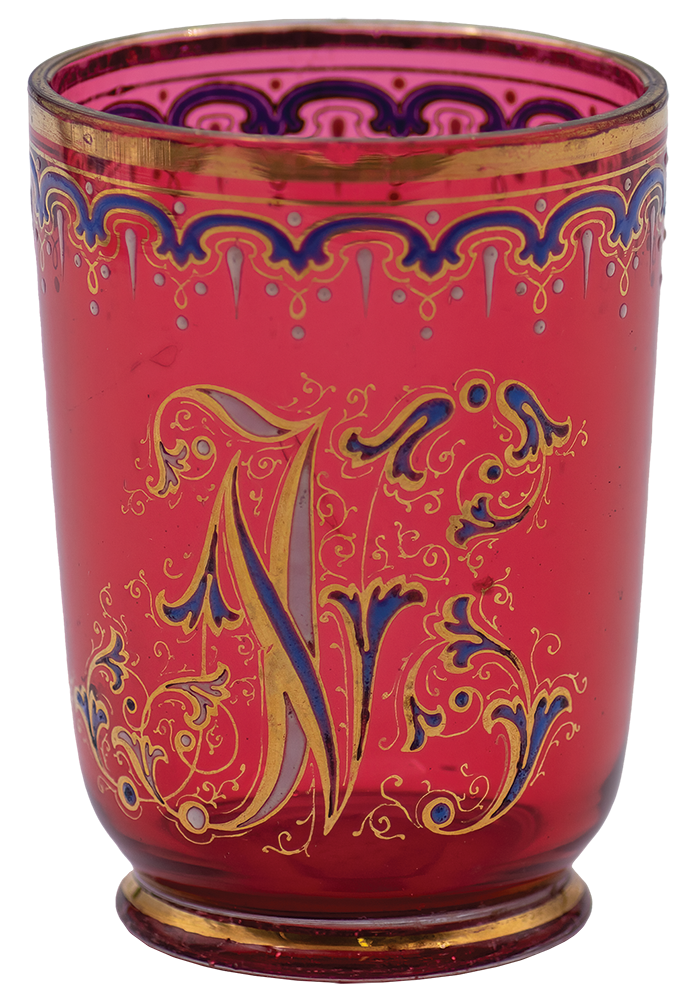
“GLASS MADE IN JAGODINA”
Products of the Jagodina glass factory of Nacko Janković from the collection of the Regional Museum of Jagodina
VIRTUAL EXHIBITION
The Collection of Glass preserves glass objects that were in use in Jagodina houses from the end of the 19th to the middle of the 20th century, as well as various glass packaging like beer bottles with the label of Jagodina Brewery which owner was Mihailo Kosovljanin, pharmacy bottles from pharmacies in Jagodina and Svilajnac that worked in the period between the two world wars, as well as glass used in catering facilities.
The latest research has changed the dating of a large number of items from this collection, ie their attribution, so it is most likely that we do not have items in the collection produced in Avram Petronijević’s glassworks. However, the findings of glass fragments, glass mass and parts of the brick kiln found in the village of Mišević, on the location where Petronijević’s glassworks used to be, were brought from field research. These findings are a valuable testimony to the production of glass in this factory.
The most important items from the collection are certainly those made in Nacko Janković’s glass factory, while the largest part of the glass in the collection is imported glass, mostly Austro-Hungarian, as well as glass items produced in the Serbian glass factory in Paraćin.
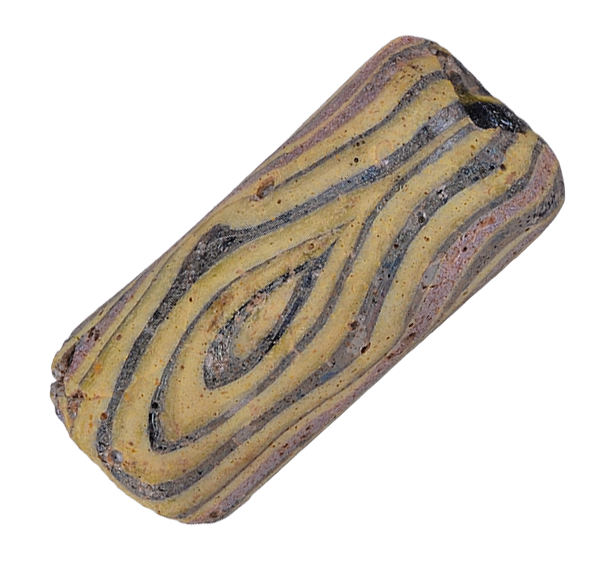
ON GLASSMAKING
through history and archeological collections of the Regional Museum in Jagodina
VIRTUAL EXHIBITION
“Take 60 parts of sand, 180 parts of seaweed ash, 5 parts of chalk or crumbled shells, heat everything well, then cool it and so you will get glass …” – says a record from the library of the Assyrian king Ashurbanipal (r. 669 – c. 631 BC). This text from the mid 7th century BC, engraved in cuneiform, is the oldest known recipe for making glass.
Even 2500 years later, this recipe has not changed much: quartz sand, soda, and limestone remained the basic ingredients for glass production. However, the history of glass goes back much deeper than its first mentioning.

Old Jagodina in the paintings of Vojkan Veličković from the collection of the Regional Museum of Jagodina
VIRTUAL EXHIBITION
Vojin Veličković Vojkan is one of the most important personalities in the cultural life of Jagodina in the second half of the 20th century. He distinguished himself as an art pedagogue, painter and initiator of art life in the city. As a lecturer at the Gymnasium, he was highly esteemed, and his activity within the Cultural and Artistic Association “Milan Mijalković” is considered the beginning of artistic life in the city after the Second World War. Vojkan Veličković painted a large number of works. He worked mostly on landscapes and portraits. He painted motifs of old Jagodina, which is disappearing before the development of the new city. Today, Vojkan Veličković is known and respected as a chronicler of old Jagodina, which he immortalized on his canvases.

LJUBODRAG JANKOVIĆ JALE: Drawings
September 14 - October 8, 2021
In the gallery of the Regional Museum of Jagodina the drawings of the prominent Serbian artist Ljubodrag Janković Jale will be displayed during Septembar. As Jagodina is the homeland of this artist, he often exhibited in our city. In 1973 he received the prestigious award of the city “Svetozar Marković”, which was awarded to prominent creators in the field of culture and social sciences. Janković last exhibited in Jagodina in 2008, and that exhibition was held in our museum.

THE JAGODINA BREWERY
VIRTUAL EXHIBITION
The Brewery was one of the first industrial plants in Jagodina. This factory was a symbol of the city and Jagodina beer was its brand for more than 160 years. On the occasion of the 150th anniversary of the founding of the Jagodina Brewery, the Regional Museum of Jagodina organized an exhibition about this factory in 2002. Although the work of the Brewery completely stopped in 2019, we will present a part of the material that the Regional Museum keeps in its fund, in collections of photographs, picture postcards, memorial objects and glass and at the same time remind of the rich history and tradition of this once reputable company.
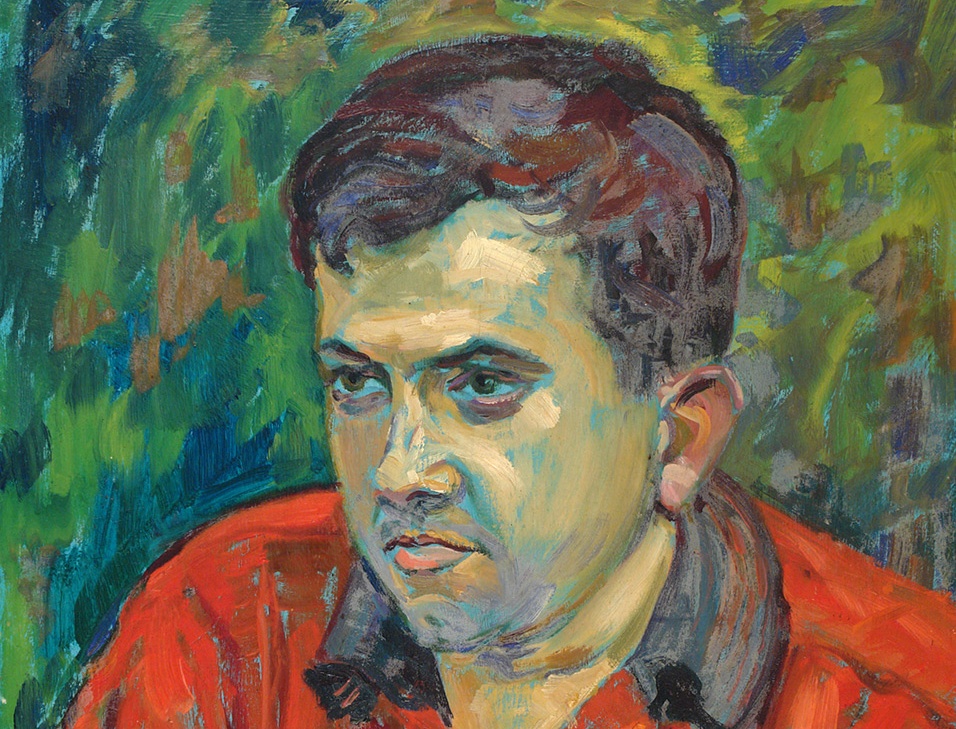
ILIJA IKA VUKIĆEVIĆ
RETROSPECTIVE EXHIBITION
Ilija Vukićević’s works have not been seen by the Jagodina audience since 1984, when his last retrospective was organized in the Regional Museum of Jagodina. Since that time, it seems that his name has been forgotten. Therefore, the exhibition of his works would be an opportunity to remember him and point out the importance he had in the renewal of artistic life in post-war Jagodina (at that time named Svetozarevo).
The special significance of this exhibition is also in the fact that a large number of our fellow citizens, who own Ika’s paintings, agreed to borrow that works for displaying at the exhibiton. In that way, we came to data on more than a hundred works by Ika Vukićević that are in private ownership, not only in our city, but in the whole world.
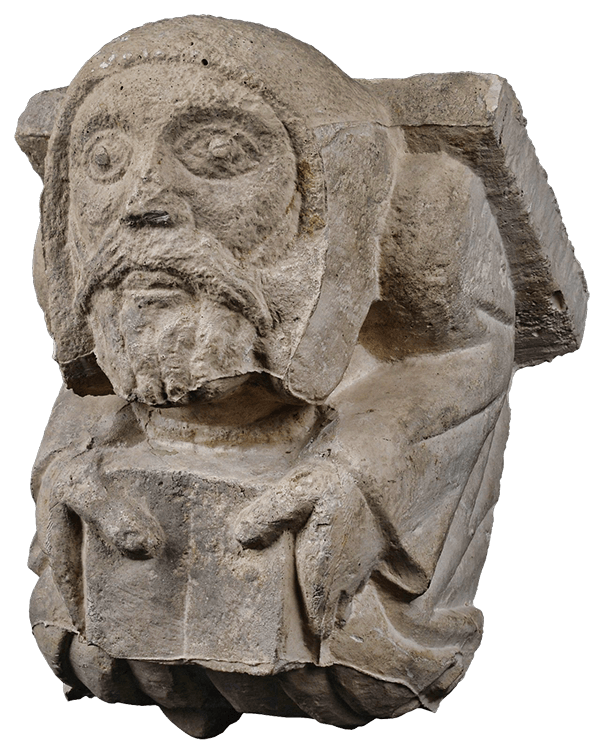
ARS SACRA
Church Art from the Art Department Collections of the Regional Museum in Jagodina
October 22, 2019 - February 8, 2021
Ars sacra, sacred art, is a significant factor in both national and world cultural heritage, which is systematically studied in our country and presented to the public according to the highest standards. The exhibited material in the Gallery of the Regional Museum belongs to the collections of the Art Department of the Museum (manuscripts, old and rare books, cultic and religious objects, sculpture, icons, fresco fragments, copies of frescoes, epigraphy, architecture, photography, postcards), and the selection of exhibits sheds light on the complex circumstances of the collections’ creation and indicates their diversity and overall cultural and historical significance. In terms of its concept and structure, this exhibition builds on the exhibition titled Church Treasuries in Jagodina, which was staged at the Regional Museum during the 2018 commemoration of the two centuries of the Old Church in Jagodina.

MILORAD TRAJKOVIĆ PAJKO
September 12, – October 14, 2019
Milorad Trajković has one of the prominent places in the cultural life of Jagodina in the second half of the twentieth century as a tireless worker in nurturing cultural life in our city. Although without a formal art education, fine art was his passion and he successfully practiced it for more than sixty years. He is one of the founders of the city’s Club of Fine Artists, its first secretary and long-term president.
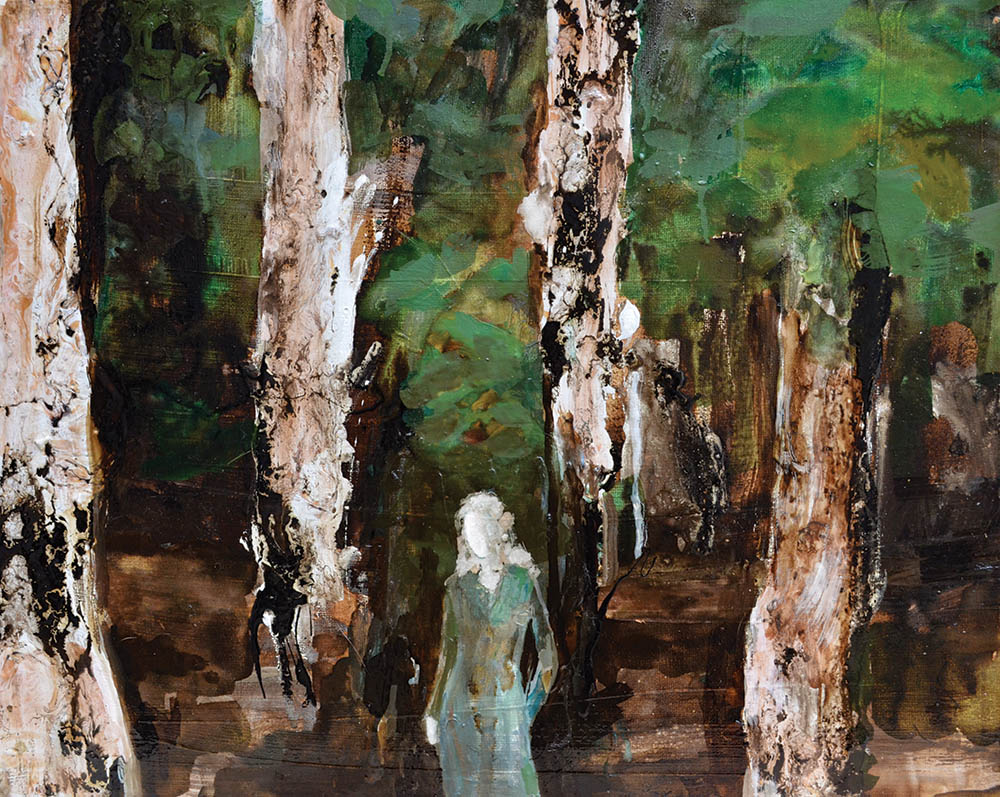
KSENIJA MILIĆEVIĆ: Dreams - communication with yourself
July 16 – August 8, 2019
Dreams – communication with yourself is a master exhibition of the artist Ksenija Milićević and also her first solo exhibition. Through about twenty paintings, whose theme is dreams, the artist establishes a specific communication with herself, but also with the world around her. Image, as a visual word, has always been a powerful means of communication. Dreams are also images, those created by our subconscious, and expressed through symbols. For Ksenija, there is a sign of equality between an art painting and a dream. She materializes her dreams in paintings, and by exploring the subconscious and the unconscious, she also discovers her hidden, dark side.
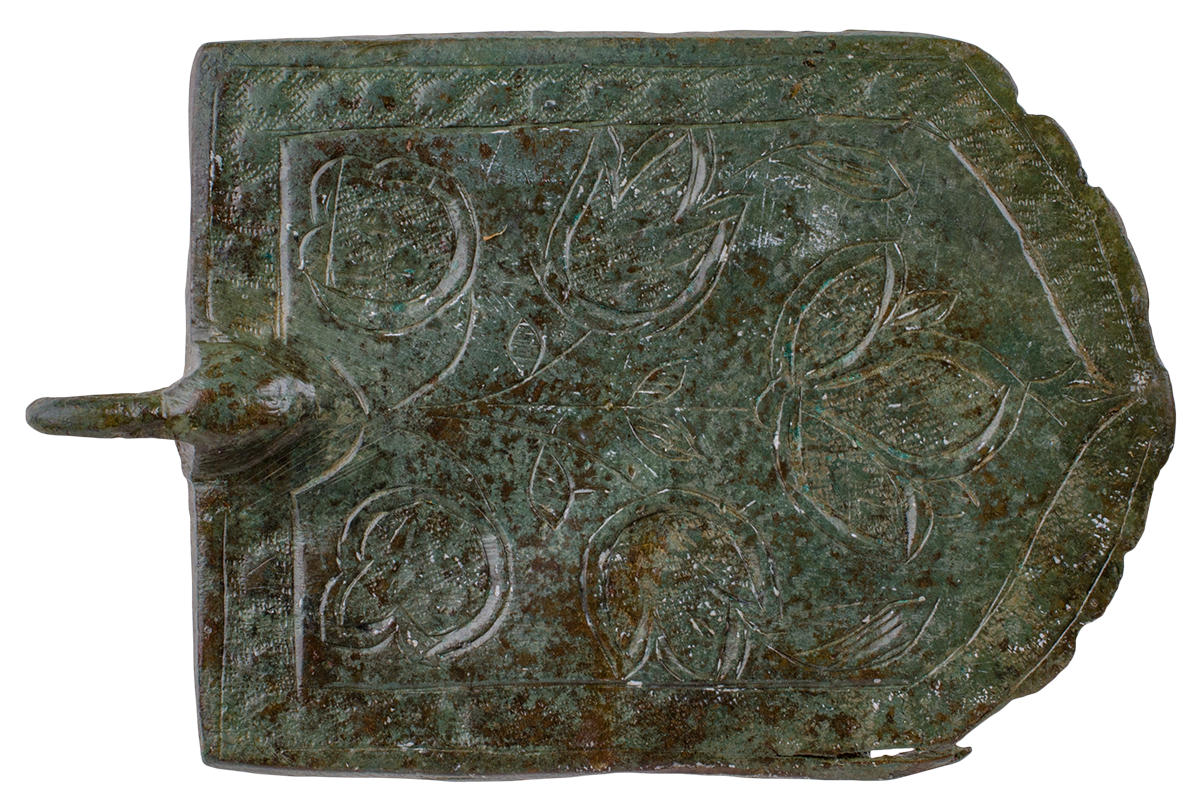
GIFTS OF THE PAST
Acquisitions of the Regional Museum Jagodina 2013-2019
May 13 - June 24, 2019
The objects exhibited at the exhibition “Gifts of the Past – acquisitions of the Regional Museum of Jagodina 2013 – 2019” in their own way speak about the history of this area and the lives of the people who inhabited it. The exhibition itself, as a special form of communication between the Museum and the local community, is an opportunity to mention all those donors who have contributed and supported our work. At the same time, it is an invitation to our fellow citizens to continue our cooperation, with the goal of preserving the past of our homeland from oblivion for generations to come.
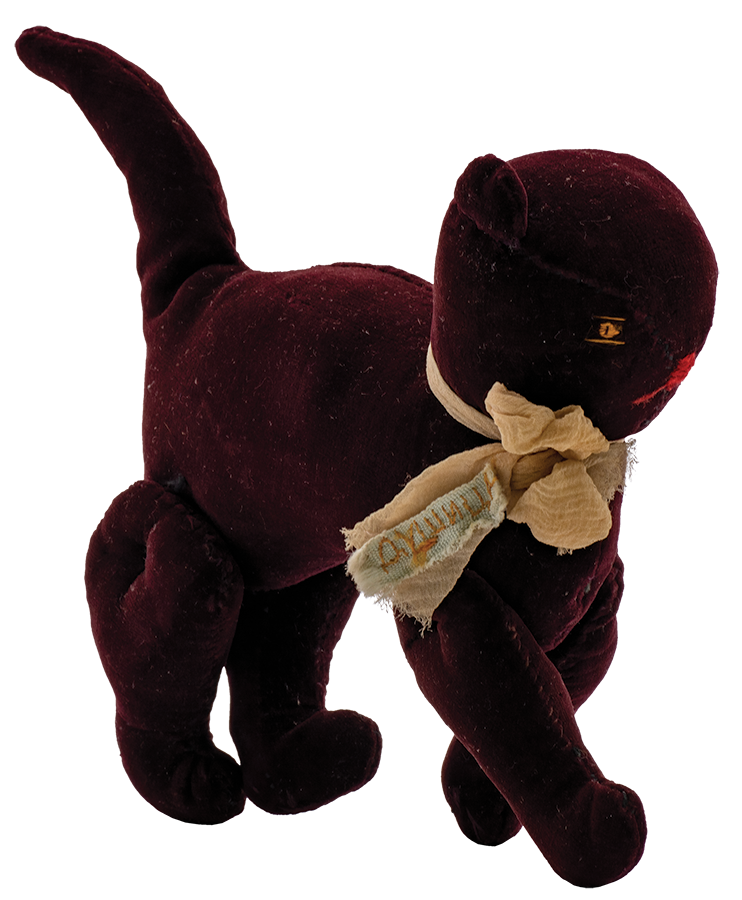
MY DEAR - children's toys from prehistory to the present day
February 22 – March 3, 2019
The exhibition “My dear – children’s toys from prehistory to the present day” was realized with the funds of the Ministry of Culture and Information of the Republic of Serbia, and is a joint project of the National Museum Zaječar, National Museum Požarevac, Museum of Krajina Negotin, Regional Museum of Jagodina, Homeland Museum of Knjaževac and Museum of Srem Sremska Mitrovica.
The exhibition premiered at the end of December 2018 at the National Museum in Zaječar, which is also the holder of this project. After Zaječar, the exhibition was opened at the Regional Museum in Jagodina, and then continued its journey to other cities whose museums collaborated on the project.


